Content
It is imperative to feed the honeysuckle after fruiting if you want to get a good harvest for the next season. In autumn, the shrub recovers the energy spent on the ovary of berries. The quality of feeding depends not only on the future fruiting, but also on how the honeysuckle overwinters.
Features of feeding honeysuckle in the fall
The berry culture survives frosty winters well, which is a big plus for the gardener. There is no need for unnecessary work associated with the shelter of the bushes. However, for successful wintering, it is in the fall that it is important to feed the plant. Honeysuckle will gain strength, resistance to cold will increase.
It is important to remember that honeysuckle is a berry bush. In this group of plants, the root system lies in the upper layers of the soil. Usually it is about 40 cm deep. In snowy winters, snow provides additional protection from the cold to the roots. In its absence, frost "hits" the bare ground. If you do not feed the berry in the fall, the weak root system will freeze. In the spring, honeysuckle will have to be reanimated. You will have to forget about the harvest of the current season.
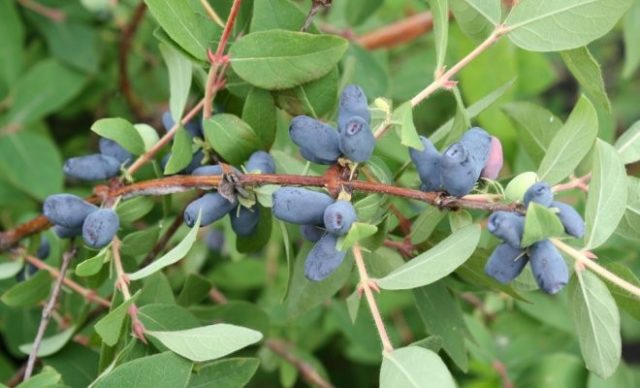
If you feed the berry in the fall, the next season the harvest will be more abundant, and the fruits will be larger.
To feed the berry, potash and phosphorus fertilizers are used. Ash, green manure will do. Gardeners often use folk remedies. Best of all, the shrub perceives organic matter. With this fertilizer, it is optimal to feed the honeysuckle in July or subsequent months, which depends on the timing of the completion of the fruiting of a particular variety.
It is optimal to combine organic matter with mineral complexes. Many gardeners make combined mixtures for honeysuckle. However, professionals advise to alternate. It is better to feed organics in summer and autumn. In the spring, mineral complexes are introduced under the berry. This approach is explained by the intensity of the decomposition of nutrient mixtures and the supply of useful components to the tissues of the bush.
See the video for more information on organic feeding:
Organic matter decomposes for a long time. First, it is processed by beneficial microorganisms living in the earth. They secrete substances that the honeysuckle absorbs by the roots. The period from autumn to early spring is just set aside for the decomposition process. Honeysuckle wakes up early in early March. The root system receives nutrients immediately.
It is better to feed with mineral complexes in spring, since these fertilizers quickly dissolve in water. They are nutrients ready to be absorbed. After entering the ground, the root system of honeysuckle immediately begins to absorb them and direct them through the tissues for the development of shoots.
A feature of feeding after fruiting is the implementation of complex measures to help prepare honeysuckle for winter. When all the berries are collected, the soil under the bushes and even in the aisles is loosened to a depth of 10 cm. After digging, it is time to feed the berry with the selected fertilizer.
To begin the process of decomposition of organic matter, abundant watering is performed. Water is needed in the fall and the honeysuckle itself to store energy. After watering, the trunk circle is mulched. Here, too, it is optimal to choose organic matter. Peat, rotted compost, is considered a good mulch. Top can be covered with spruce needles. The thorny mulch will protect the honeysuckle from pests.
The convenience of caring for honeysuckle is explained by the fact that it gives the gardener a minimum of trouble in the fall. It is enough to feed the shrub, cut it and tie it with a rope so that the shoots do not break with snow. Shelter is not required.
How to choose an autumn feeding for honeysuckle for the winter
To feed the berry, experienced gardeners make up their own fertilizer recipes. They monitor the condition of the plant, take into account the varietal peculiarity, know the composition of the soil where the honeysuckle grows. It is easier for beginners to feed the culture with ready-made complexes offered by retail outlets.

From mineral complexes for honeysuckle, you can purchase phosphorus-potassium fertilizer
When choosing top dressing, first of all, bets are made on organic matter. It is enough just to scatter it under the mulch bushes. The best is humus obtained from horse manure. But not every gardener has access to it. Organics can be purchased at the store. For example, bone meal is a fluoride fertilizer. Wood ash is used to replenish calcium. It is easy to get it yourself by lighting a bonfire from cut branches of trees.
To feed the honeysuckle in the summer, choosing the period immediately after the release of the berries or in the spring with the onset of awakening, you can use mineral complexes. They are better absorbed during the growing season. Preference is given to potassium monophosphate, Diammofoske or other complex fertilizer. It contains phosphorus and potassium of the required proportion.
It is better to dissolve any mineral complex with water and water the honeysuckle with a ready-made liquid. You can feed the berry with dry granules. They are brought into the ground. With each watering, the dry granules gradually dissolve, providing the berry with useful substances for a long time.
How to feed honeysuckle after harvest
The choice of a feeding complex is the business of every gardener. Usually they use what is freely available. Organic matter can always be prepared on your site by organizing a compost heap. If there is no desire to do unpleasant work, they go to the store for fertilizer.
Autumn feeding of honeysuckle with mineral fertilizers
When using mineral fertilizers, it is important to know that in autumn they will provide nutrients to the root system. However, they will not affect the composition of the soil in any way. This is the minus of minerals over organics.

One of the most popular fertilizers is "Baikal EM-1"
To feed the berry in the fall, a good preparation called "Baikal EM-1" is suitable. It is sold as a concentrated liquid in bottles of different sizes. In addition to providing honeysuckle with nutrients, the drug will cleanse the soil from micropathogenic environment. For each bush, a solution of 10 liters of water and 100 ml of "Baikal" is prepared, poured into the trunk circle. After a short period of time, abundant watering with three buckets of water is carried out.
If the drug was used to feed the honeysuckle in August, then with the onset of October, the procedure is repeated, provided that the autumn is warm without frost. From this, the berry stocks more moisture and nutrients for the winter.
When using other mineral fertilizers, you must carefully read their composition. Do not use preparations containing a lot of nitrogen. In honeysuckle, buds that are laid in the next year can awaken. With the onset of frost, they will die.
Top dressing of honeysuckle in autumn with phosphorus fertilizers
Phosphorus is added when the weather is still warm outside. However, experienced gardeners do not recommend using it in its pure form. It is optimal to prepare an N-P-K composition from individual components or purchase a ready-made complex with a phosphorus content.
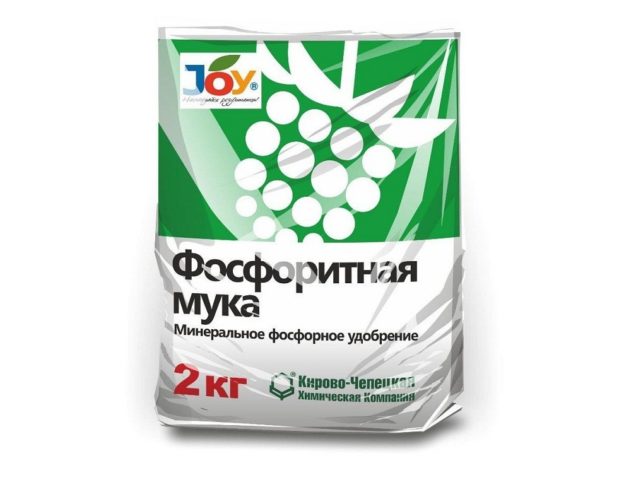
When preparing the composition yourself, you can use phosphate rock
You can independently prepare the complex for the September feeding of honeysuckle according to the following recipe:
- ammonium nitrate - maximum 20 g;
- urea - no more than 10 g;
- superphosphate add 50 g.
It is better to dissolve all the ingredients with water, and then feed the plant.
Top dressing of honeysuckle after picking berries with potash fertilizers
It is likewise not desirable to add potassium in its pure form. Usually they purchase a ready-made complex containing this fertilizer or make the necessary composition on their own.
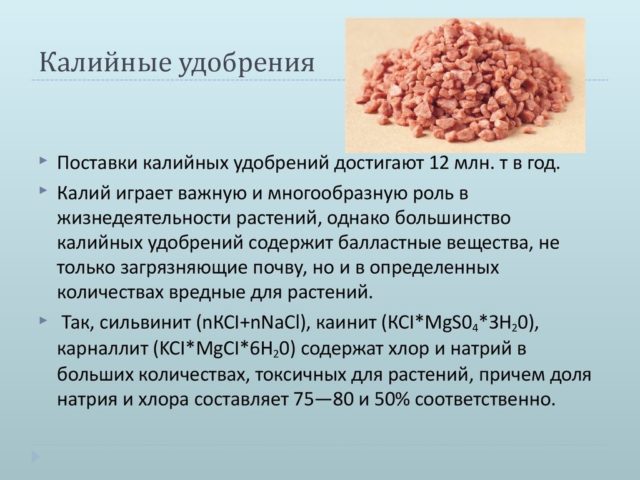
Potassium contains harmful substances that pollute the soil
To feed the berry in September, usually 15 g of superphosphate and potassium sulfate are dissolved in a 10-liter bucket of water. 1 liter of liquid is poured under each bush.
Top dressing of honeysuckle after fruiting with organic fertilizers
Organics are often fed not in autumn, but in July-August after picking berries. The easiest option is to mulch the trunk circle with dry compost or humus.
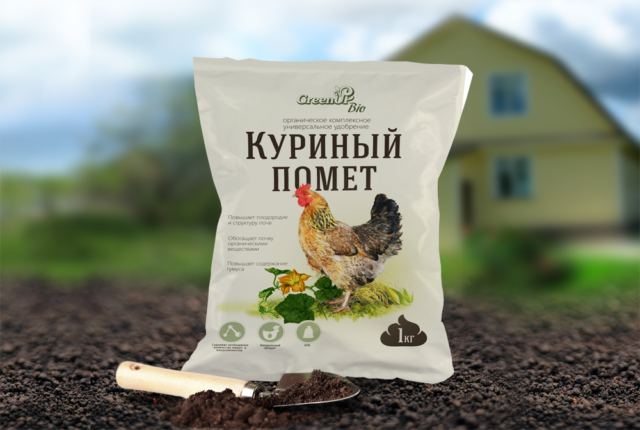
In summer, you can add a solution of bird droppings to the honeysuckle.
A good stimulation of honeysuckle is given by irrigation with a solution from the infusion of mullein or bird droppings. First, 1/3 part of organic matter is soaked in 1/2 part of water for 2 days. Ready infusion 1 liter is poured into a bucket with 5 liters of water, stirred and watered under the root. The procedure is carried out on a cool day.
Top dressing of honeysuckle after harvesting with folk remedies
Siderata are often used as a folk remedy. They successfully replace organic matter. After decomposition, the topsoil is enriched with humus. Peas, mustard, clover and other similar crops are sown as siderates.
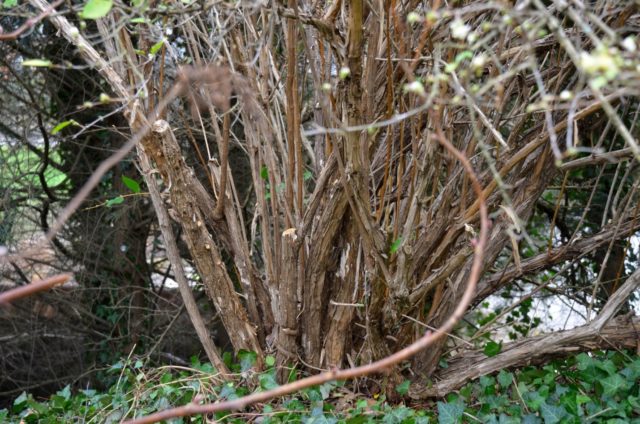
Siderata are mowed and buried under bushes, where they decompose.
Sowing is carried out immediately after harvesting. The grown green manure is mowed, buried in the ground to a shallow depth, so as not to damage the roots. However, the best option is not to bury, but to cover the spread tops with soil on the trunk circle.
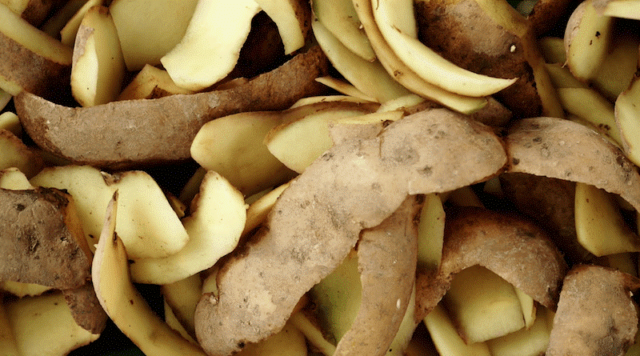
Potato peels are rich in nutrients
From folk remedies, they also use a decoction based on potato peelings. Ash is added to it, insisted for about 2 days. The finished solution is poured into a hole dug around the base of the bush.
Conclusion
It is advisable to feed the honeysuckle after fruiting immediately so that the berry has time to absorb nutrients. If the process is delayed for cold regions, the plants will enter the calm stage. Late procedure will not be beneficial.








